Anatomy of an Era: Ahman Green, Part 2
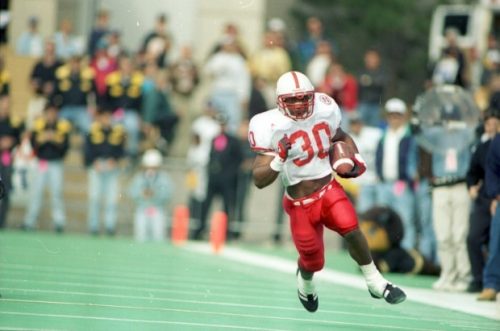
Excerpted from Chapter 98, No Place Like Nebraska: Anatomy of an Era, Vol. 2 by Paul Koch
Anatomy of an Era: Ahman Green, Part 2
Q: Now, your freshman year was the year Lawrence Phillips was out for a while because of his off-field issue. So what was it like for a freshman to be playing college football so soon?
AG: Right away out of two-a-days Coach Solich asked me, “Ahman, it’s partly our decision, but it’s also up to you: do you want to redshirt or do you want to play your freshman year?” I told Coach Solich, ‘Look, I can play linebacker, running back. I can punt, I can kick the ball, I’m not redshirting for no amount of time.’
Q: (laughs) The typical freshman response!
AG: Yes, because I knew I could play. I knew I could play. I was an athlete; I could play more than just running back. I played different positions in high school and little league, so I knew I could do it. Once I got through two-a-days at Nebraska I was like, ‘Hey, I can play college football. I made it through two-a-days mentally and physically prepared.’ I told him that, and the next step was just what number I was going to wear. I wanted to wear number 34, but Vershan Jackson had number 34.
Q: I take it you’re a ‘Sweetness’ fan? A Walter Payton admirer?
AG: Yeah, and Vershan wouldn’t give it up. So about a day or two passed and I walk into the freshman locker room and there’s a number 30 in my locker.
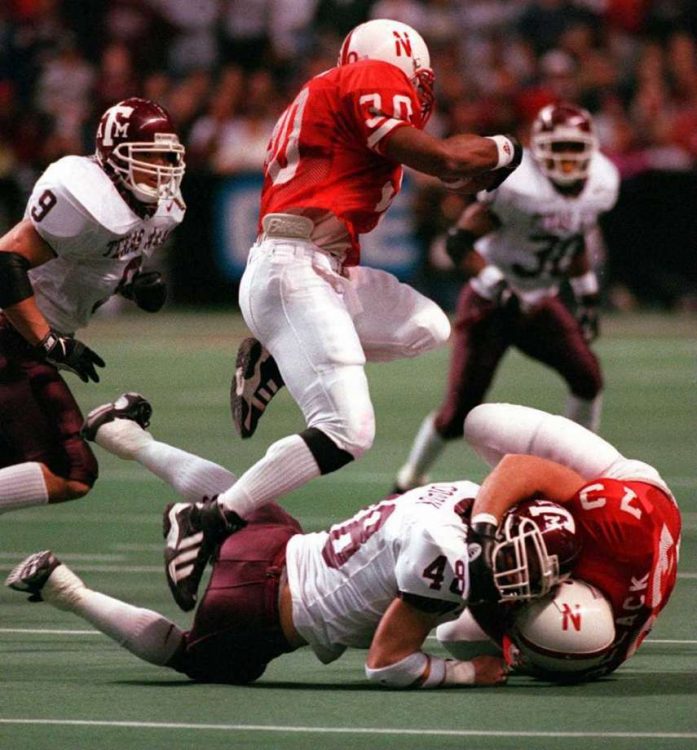
Like I said, I’m a college fan and a football fanatic, so I knew the significance of this number. So I’m like, ‘Okayyyy, they put number 30 in my locker. Okayyyyy…’ And from my recollection, no one had worn number 30 since 1984, you know? I almost didn’t want to wear it because there was a lot behind it and a lot of expectation -not from the coaches, but from the media and the fans- seeing me wearing number 30 with Mike Rozier winning the Heisman. I was just, ‘Okay, I’ll wear it, but I‘m just gonna be me. I’m gonna do what I can do. I know what Rozier did in it, but I’m gonna do my best.’
Q: How would you describe Coach Solich? Any of his methods, ways of coaching stand out to you more than others?
AG: Again, another good coach. He was a guy who shot it to you straight, he got you prepared physically and mentally. At the beginning of football season in these running backs drills we’d do our individual stuff and with the team, and all of the running backs, we’d be huffing and puffing and we’d be tired because of what we’d just went through. (laughs)
But by midseason we’re probably the most in shape guys because our individual drills, our workouts with Coach Solich were so taxing. By the time we got through with that we were ready to go practice for another two, three hours, easy. And that was good for us. We needed it.
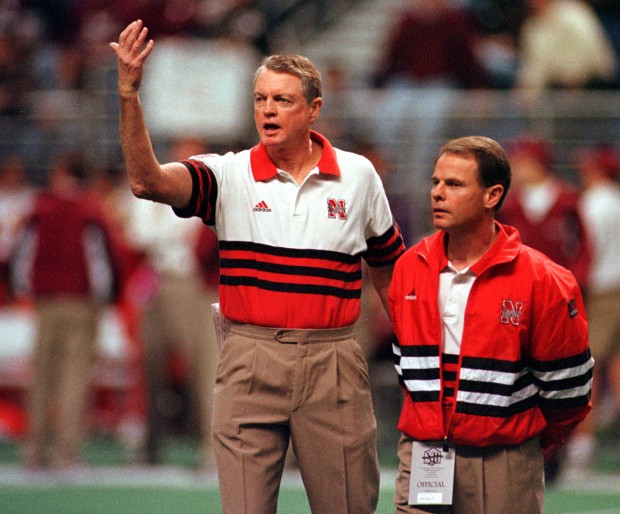
Q: Does any one drill stand out to this day?
AG: I still do them. I remember all the drills and I do them now with the kids I work with. We do the balance drill where we basically act like we land on one hand, same foot and same hand, make sure we hold the ball almost like where we’re getting tripped and you put that hand down to catch your balance. We had the strip drill, three-step-and-cut drill. I do all that and have never forgotten it.
Q: Describe the strip drill. I forget that one.
AG: Well, it’s the gauntlet. You run through guys -the other running backs- and they’d try to strip the ball out.
Q: Oh, that one. You’re a lefty, aren’t you?
AG: Well, at that time I was using both hands. Basically, my rookie year in the NFL I injured my right wrist really bad and I just kind of kept it in my left arm, and after that I just kept it there. If it wasn’t broke, why try to fix it, you know?
Q: I never knew that. And getting into the staff dynamic, do any of the other coaches stick out to you?
AG: Coach McBride was great. I don’t know what it was, but he liked me a lot. He probably wished I played defense.
I remember before I came out for the NFL, I could hear him yelling at Coach Osborne -which is hilarious- somebody actually yelling at him, at Coach Osborne, “What’s wrong with the offense? Give the ball to Ahman!” Knowing that he had my back like that was fun because he was from Chicago and all his brothers were police officers in the Chicago area, so you knew he was nitty & gritty and knew other words that Coach Osborne probably never would have said. (laughs)
Q: He was like an alter ego, huh?
AG: Yeah, it was yin and yang. Coach Osborne was one side of the spectrum and Charlie McBride was the other.
And then all you guys in the weightroom: you, Bryan Bailey, Mike Arthur. I know the faces but just can’t think of all the names right now. All them guys in the weightroom because, really, you guys were the other cog in that wheel, from Bryan Bailey to all the assistants.
Q: Funny you mention Bryan Bailey’s name, which brings me to this question: Is there one person who you believe made a huge difference to you and/or the program as a whole? Someone who made the greatest difference in your time there?
AG: Oh, that’s easy. It was Bryan Bailey.
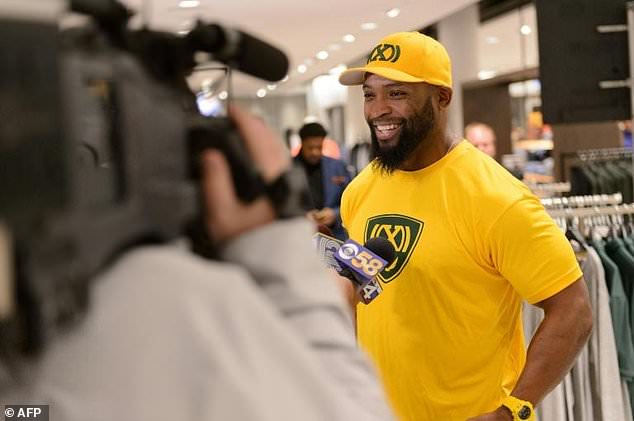
Q: Tell me why.
AG: He was the guru behind it all. He was the mad scientist, basically, in the weightroom. He had us doing all kinds of stuff that we never did and probably never do again after we left the school. (laughs) From lifting weights to stretching, pull-ups, push-ups, bench press, all kinds of things that basically prepared us for Saturday.
And the funny thing about Bryan Bailey, you fast forward… fast forward to the year going into the draft in 2006: I’m out in California with my agent visiting and he’s interested in trying to find Reggie Bush, so he had me kind of recruit him a little bit.
So me and him, we go to a concert together and we hang out a little bit, and during the day he’s like, “Man, I’m about to go work out at campus.’ I’m like, ‘Okay, well I’m gonna go sit at my hotel and work out there.’ And then I asked him a couple questions and he’s like, “Yeah, we’ve got a pretty good strength program.” And me, being a workout nut like I am, I go, ‘So who’s your strength coach?’ (‘Cause I’m thinking I might know of him.) And he’s like, “Bryan Bailey.” And I’m like, ‘Hold up. You’re talking about a short, red-haired dude? Looks like a little leprechaun?’ (laughs) And he’s like, “Yeah.” And I’m like, ‘That’s why you’re all winning national titles!’ At that time they had won two or three in the past four or five years or so.
Q: Sure, they made it to the title games anyway…
AG: Yeah. And I said this right to Reggie Bush’s face, I said, ‘This is why: he’s the reason why you all are winning national titles. Because you’re all in shape.’
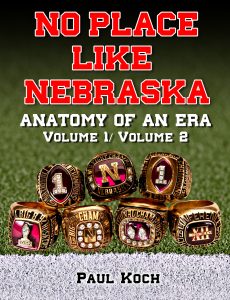
Available on Amazon.com
That was his goal, always to make sure the top players who were basically seeing the ball most of the time were in the best shape we could be…Tommie, me, L.P., Scotty, Brendan Holbein, Riley Washington. All the guys who handled the ball offensively and them guys on the defense, he basically personally worked them out. If you went in there individually you were out of luck, because he was going to kill you…
Q: Sadly, you had his full, undivided attention, huh? (laughs)
AG: Right. Right. If you came in there with two or three guys you were alright, you were going to survive. He was the only guy that worked me out in the weightroom so bad that I would throw up.
Q: The metabolic power circuit?
AG: Oh my God, unbelievable.
Q: Ahman, I just finished doing eight weeks of that workout just a few weeks ago…
AG: Oh man, I’ve got to get that going again for myself. I called him and left him a message but he hasn’t called me back.
Q: Dude, that’s Bryan. He’ll call you back in two months. (laughs)
AG: Yep. That’s right…
Q: And about Bryan: anyone can invent a crazy workout, so what was it about Bryan? Some intangible thing? His personality? What?
AG: It was everything. Personality… he just didn’t coach you, he told you why you were doing a certain workout, what it’d do for your body. How that made you stronger or why stretching this way makes your muscle elongate and more elastic and can last longer.
He would explain all that to you while stretching or making you do a pull-up from a bar and get full extension, why you have to come all the way down ’til your elbows lock out and go back up, what was the purpose of that. He would explain every workout, why you did it. So then when you do it you’re like, ‘Okay, if I don’t do it like that I’m not going to get the results I want.’ So he explained all that to you.
And then after the workout the dude would stretch you out personally. He’d stretch any guy out who could take it, pretty much. (laughs) That’s what I miss, because that’s all I do now is stretch. It keeps me elastic…
Q: It keeps you young! You’re a football geezer, man. You’ve been playing for, what, twelve years in the NFL?
AG: Yep.
Q: Little did you know it, Ahman, but you actually minored in exercise physiology by hanging around Bryan Bailey.
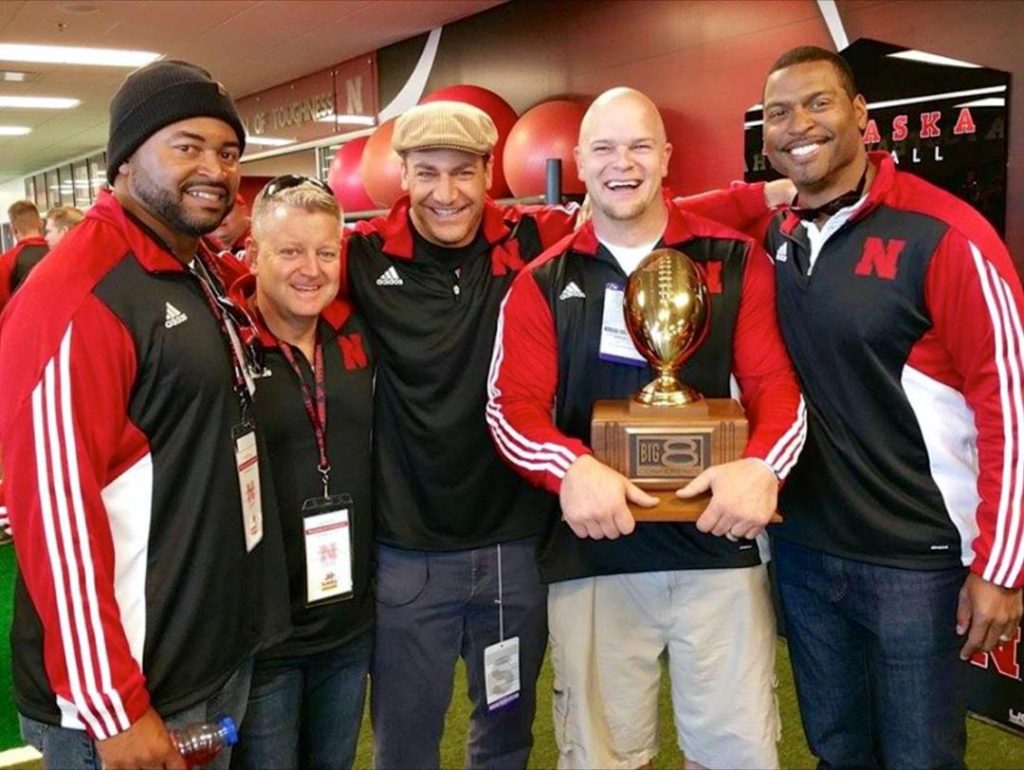
The Last Big 8 Trophy: Jay Foreman, Dave Ellis, Christian Peter, Jared Tomich & Mike Rucker
AG: Yes. And another guy behind the scenes and kind of alongside a Bryan Bailey was Dave Ellis. With Dave, he had the knowledge of nutrition, you know, telling everyone exactly what we needed to eat and how to eat and how much to eat, what not to eat and stuff like that.
That was another part of our program that got taken away after I left, and it kind of put us on the same level as all the other universities. They cut down on the nutrition program, they cut down on the weightroom, because the Big 12 came in and was basically saying we were ahead of the game. It wasn’t our fault, they were just behind us. It wasn’t our fault that Colorado and Kansas State, Florida, all these schools that we basically throttled, they were behind the 8-ball and we were ahead of them.
Q: And of all places, Ahman, it was at Nebraska. Why there? Why then? We’ve both traveled and have seen a bit of the world, and what amazes me is that this all came together in the heartland, in Nebraska, a less populated state without the typical glamour and glitz. This group that was ‘assembled’, a group of athletes, a group of coaches, a support staff, the fans who are so rabid and supportive… it was all in Nebraska.
Bracketing the time frame just before your freshman year to your last year we were the most dominant team in the land! We’re talking 60 wins and only three losses in a five-year span. If you ask me, that’s as close to absolute perfection that you can get college-aged kids to achieve, would you agree?
AG: Mmm-hmmm. Yes it is.
Q: What do you think set Nebraska apart during those years that would make the tiniest difference? That ‘one inch’ like the quote by Al Pacino in that movie, Any Given Sunday, “There are inches all over the place…” What gave Nebraska those inches?
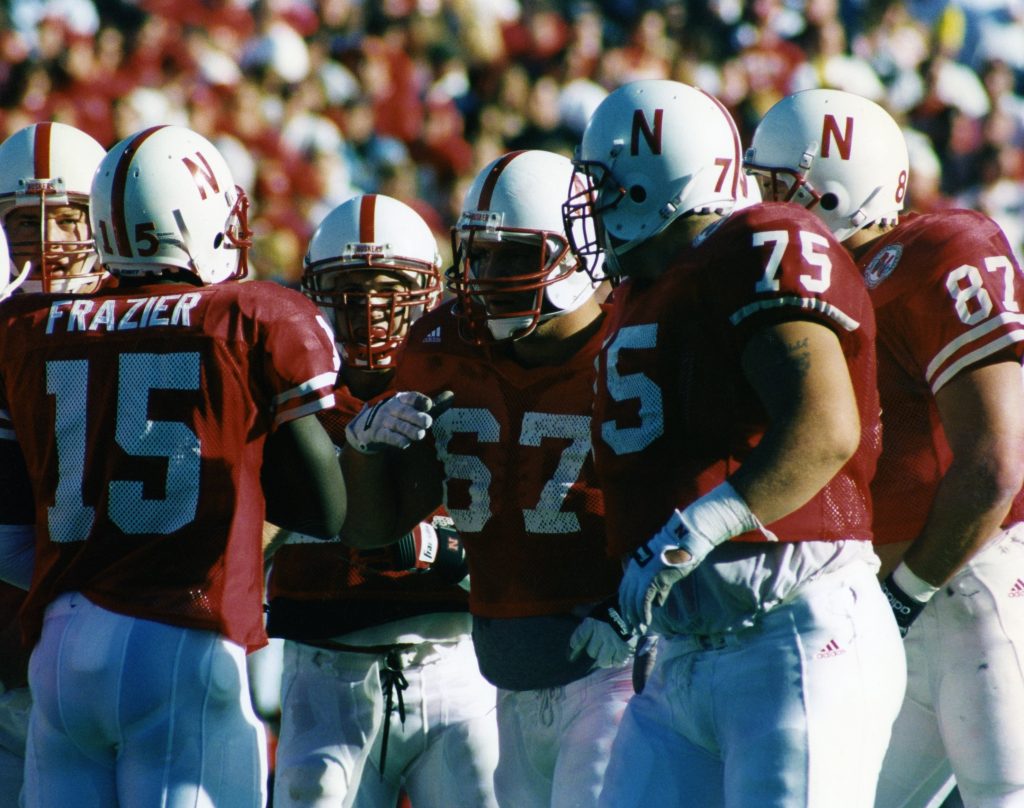
AG: I say what you just said: Everybody. Those coaches, the players, from the nutrition with Dave Ellis to you guys in the weight room to guys like Jack Stark, the team psychologist who would talk to us once a week.
I still talk to him to this day. What he told Coach Osborne before he hired was hired, he said, “I can give your players a 5 percent advantage.” He would talk to us about that stuff, and that 5% was a big difference when we were already athletically talented, but to give us that extra confidence, that extra will, the way to prepare mentally for a game and prepare mentally for a practice and all that type of stuff? All those little percentages added up.
Basically, we were hitting on all cylinders in terms of having 100% confidence, a 100% support system from the people like Dennis Leblanc in the academic wing.
We got support from them. Basically they got us everything we needed to pass a class: we had study hours we had to hit, we had tutors we needed at our disposal, pretty much everything we needed. The only thing we really had to do, as a student-athlete, was play football.
We’d go to school, take care of our books, and football took care of itself. So come Saturday I wasn’t worried about how I did in class, because I did well in class. Come Saturday, all I was worried about was kicking whoever’s butt I’m gonna kick that weekend.
Q: (laughs) Tell me what it meant to be playing behind Nebraska’s offensive line at that time. What was it like watching the Pipeline at work?
AG: It was great. A running back’s dream. I was blessed to have an offensive line in high school that was awesome, too. At Central my junior and senior year, our average weight and height for our offensive linemen was 6’1” and 290.
Q: Really?!
AG: So when I got to Nebraska things just got better.
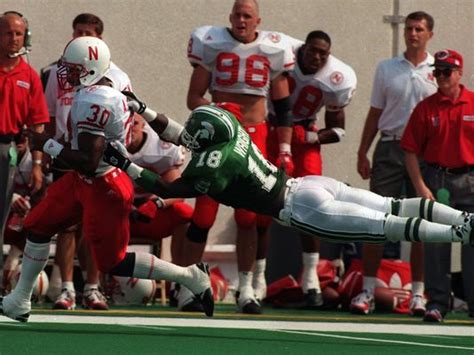
Q: I could have been All-State behind that line! And I’m Coach Solich’s size, remember? (laughs)
AG: Yeah, I remember. (laughs) So coming in there and meeting guys like Aaron Graham, Aaron Taylor, Chris Dishman, Jon Zatechka, Rob Zatechka…
You look at Aaron Taylor and Aaron Graham: Aaron Graham was an All-American center out of Texas and Aaron Taylor was from Texas, too, but he played center and guard and was All-American at both. By the time he left Nebraska… a lot of people don’t know that because he didn’t do much in the pros, but he could have played pro ball easy. Easy! I mean, they say he was short. He was six feet but he was like 330. (laughs) He was a little cannonball.
If I’m an NFL coach and I’m looking at his height? I say, “I don’t care about his height, he’s almost 350 pounds and he can move. That’s the last thing on my mind, is his height. And he can play center and guard.”
To be continued….
Copyright @ 2013 Thermopylae Press. All Rights Reserved.
Photo Credits : Unknown Original Sources/Updates Welcomed
Author assumes no responsibility for interviewee errors or misstatements of fact.